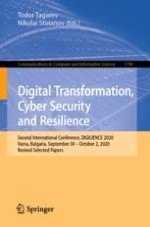This volume constitutes revised and selected papers presented at the First International Conference on Digital Transformation, Cyber Security and Resilience, DIGILIENCE 2020, held in Varna, Bulgaria, in September - October 2020.
The 17 papers presented were carefully reviewed and selected from the 119 submissions. They are organized in the topical sections as follows: cyber situational awareness, information sharing and collaboration; protecting critical infrastructures and essential services from cyberattacks; big data and artificial intelligence for cybersecurity; advanced ICT security solutions; education and training for cyber resilience; ICT governance and management for digital transformation.
